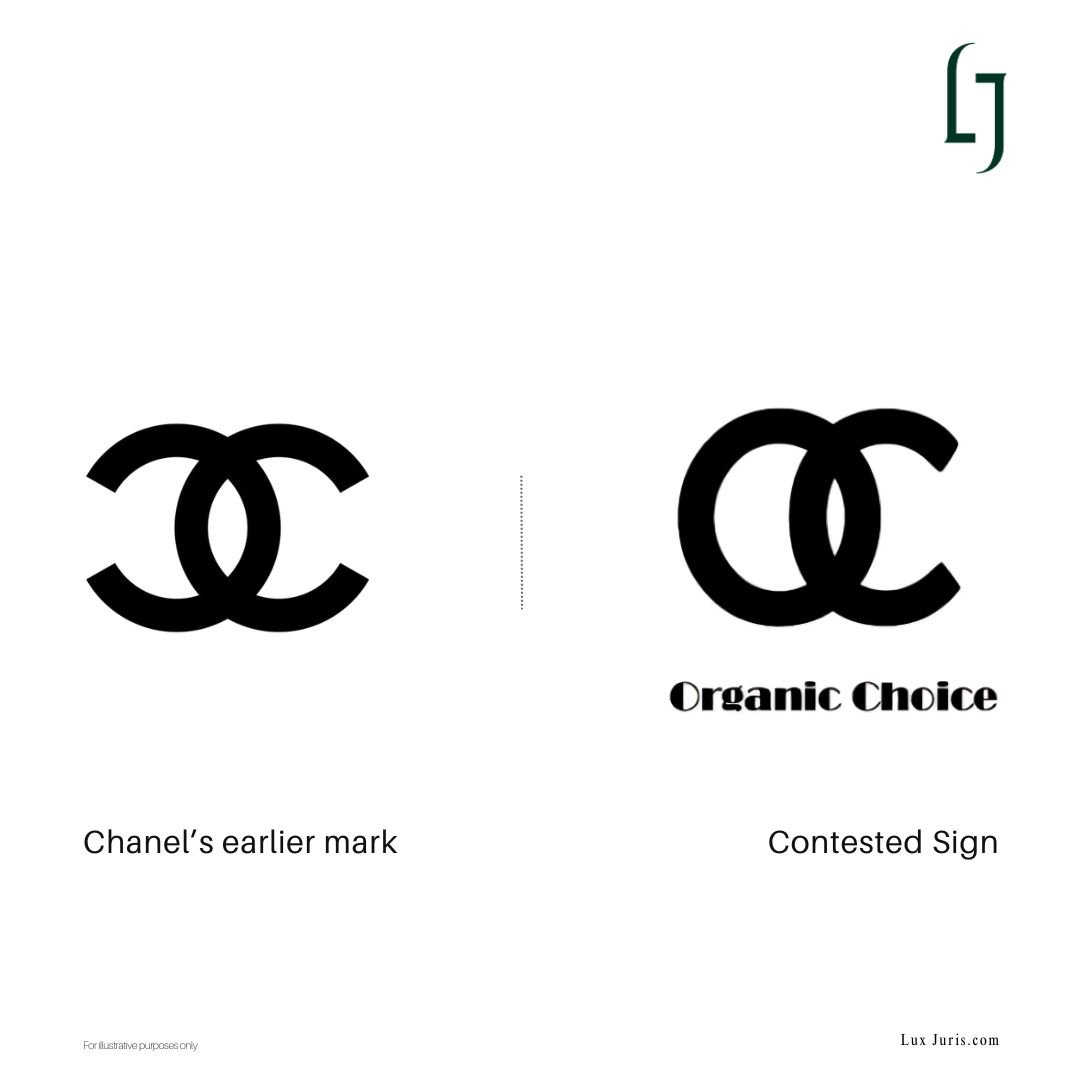On 24 September 2025, the European Union Intellectual Property Office (EUIPO) Opposition Division upheld Chanel’s opposition to a European Union trade mark application filed by Organic Choice Ltd. The application covered goods in Class 3 and Class 25, including perfumery, cosmetics, clothing, footwear, and headgear. The opposition relied on Chanel’s French trade mark registration and invoked Article 8(1)(b) of the European Union Trade Mark Regulation (EUTMR) on the basis of likelihood of confusion.
The Division rejected the contested application in its entirety. The applicant was ordered to pay EUR 320 to cover the opposition fee and related costs. Assessment of enhanced distinctiveness, reputation, or Article 8(5) EUTMR was not required, as the opposition succeeded on the primary ground of likelihood of confusion.
Comparison of Goods
The contested goods were divided between Class 3 and Class 25. In Class 3, Organic Choice sought registration for perfumery and fragrances, natural and synthetic perfumery, ethereal oils, hair care lotions, non-medicated cosmetics and toiletry preparations, and non-medicated beauty preparations. In Class 25, the application included clothing, shoes, and headgear.
The Division found that perfumery and fragrances were identical to Chanel’s perfumes. Hair care lotions, non-medicated cosmetics, and toiletry preparations fell within the broad category of Chanel’s cosmetics and were therefore identical. Ethereal oils were considered similar to perfumes because they are fragrant liquid compounds used in aromatherapy or for enhancing personal or environmental scent, with overlapping producers, distribution channels, and consumers. In Class 25, clothing and headgear were identical to Chanel’s goods, while shoes were included within the broad category of Chanel’s footwear. Overall, the contested goods were either identical or highly similar to the opponent’s goods.
Relevant Public
The Division assessed the relevant public as average consumers of cosmetics, perfumery, clothing, and footwear. These consumers are reasonably well informed and observant, with an average degree of attention. The products are commonly displayed in stores or online, where consumers rely primarily on the visual impact of a mark to identify the source. Consumers are unlikely to compare marks in detail before purchase and generally rely on memory or prior recognition.
Comparison of the Marks
Chanel’s earlier mark is a purely figurative mark, consisting of two interrupted bold black circles overlapping horizontally. The contested mark contains a full circle overlapping with an interrupted circle, accompanied by a small verbal element “Organic Choice.” The Division concluded that the dominant figurative elements of both marks are visually highly similar. The verbal component in the contested mark was considered weak and did not reduce the overall visual similarity.
Phonetically, the marks were not compared because the earlier mark is purely figurative. Conceptually, the marks differ, Chanel’s mark is meaningless, while the contested mark conveys “Organic Choice,” interpreted as indicating natural or carefully selected products. This conceptual difference was considered of limited relevance because the verbal element is minor and not distinctive.
Any slight differences in the figurative elements, such as the left circle being full in the contested mark and interrupted in Chanel’s mark, were considered negligible and unlikely to be noticed by the average consumer.
Distinctiveness and Likelihood of Confusion
Chanel’s earlier mark was found to have normal inherent distinctiveness. Although the applicant claimed enhanced distinctiveness or reputation, the Division found it unnecessary to assess this because the opposition succeeded based on inherent distinctiveness alone. Considering the visual similarity, the identity and similarity of goods, and the average attention of consumers, the Division concluded that a likelihood of confusion exists. The contested mark was therefore rejected for all goods.
Costs and Appeal
The applicant must bear the opposition fee and costs of EUR 320. Appeal rights exist under the EUTMR, with deadlines for filing and payment as prescribed.
Conclusion
The decision shows that a dominant figurative element can decide the outcome of an opposition, even if the contested mark includes a descriptive or weak verbal component. When marks are visually similar and the goods are identical or closely related, the contested mark is likely to be rejected due to the risk of confusion. This case illustrates the importance for rights holders of registering and protecting distinctive figurative marks in sectors where visual identity is central.
Source:
